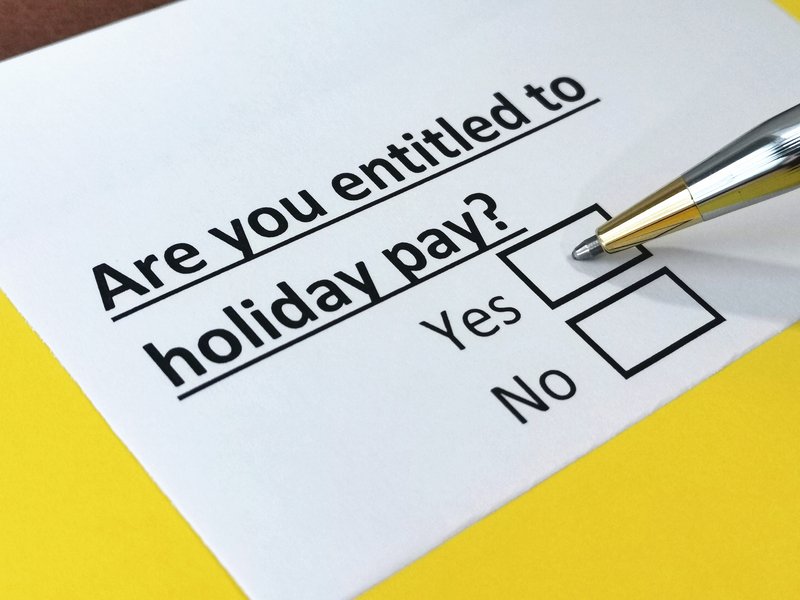It is virtually impossible to eradicate staff sickness absence. However, for small businesses, the costly nature of absenteeism can be extremely disruptive to the day-to-day running of the business.
There are many costs associated with staff being off sick, including compensation to the absent employee, the additional expense of finding temporary workers and the possible decline of productivity due to other employees being tasked with additional workloads.
Despite its unpredictability, there are steps small business owners can take to minimise the negative effects of absenteeism. This guide provides you with advice on how to effectively manage the different aspects of sickness absence.
Monitoring employee absenteeism
Excessive and re-occurring instances of sickness absence can be a problem for businesses, particularly small businesses as it interrupts the day-to-day running of the company as a whole. For this reason, employers should take steps to understand and reduce the absence of their employees.
Monitoring absence is the first step to understanding the reason behind it. Start by creating a monitoring system and record all types of absences regardless of their length. Make sure that you find out the cause and reasons behind the absence.
You can use the data collected to analyse and spot any trends, such as whether there is an increase during school holidays, during the summer months or possibly winter months.
Contacting staff who are on sick leave
When a staff member is off work sick, it is a good idea to keep in touch with them. An employer should find the right balance: too much contact can disturb the employee’s recovery, while too little can result in you feeling out of control of the issue.
Asking how the employee is recovering and when they think they will be able to return to work is appropriate, as long as you don’t repeat this questionb persistently when the employee cannot answer.
If they can return, then that will give you an indication when the employee intends to do so, enabling you to prepare for their return to work by telling colleagues, preparing a desk for them or dividing workload. You can also ask them if there is anything you can do to help them return to work sooner.
If the employee has a disability you may be under an obligation to make any reasonable adjustments to help the employee overcome any disadvantages they encounter because of their condition.
Employees with short-term sickness
Multiple short-term but persistent absences can disturb the workplace more than one long-term absence. If an employee has many short term absences, it may be appropriate to have a conversation with them to ask if there are any underlying issues which are causing the absences.
Holding ‘return to work’ interviews for every absence that occurs can be a good policy to help you monitor all absences, especially if they are unauthorised or self-certified.
Short term absences are very different from lateness, and therefore should be distinguished when looking into the reasons causing it, however if both are persistent, then you should investigate to determine why.
If there is no underlying condition and the absences are unconnected, you may be able to take disciplinary action if the employee is in breach of your absence policy.
If the level of absence or lateness reaches a trigger point in your absence policy, then you may be able to take steps according to the policy, such as disciplinary action or placing the employee on an improvement plan.
It is important to remember that a disability or other underlying condition can result in short term absence; medical conditions that need to be addressed by the employer will not always result in long periods of absence.
Workers on long-term sick leave
Managing long-term sickness absences can be more difficult, as employers are left in a difficult position with fewer staff struggling to cover the workload. Again, employers should keep in contact with the employees during their absence.
If the employee feels that they can return to work, agreeing a phased return can help them gradually adjust to the working environment again.
Remember to follow your contractual procedures if taking any action while a worker is on long-term sick.
You should always obtain medical evidence on what the employee’s current capabilities in work are and also whether the employee would be able to return to work in the foreseeable future. You could get this from the employee’s GP or an Occupational Health Specialist before making any decisions on the best way forward.
Paying staff when off sick
Whether to pay, or not, and how much you pay your employees when they are off sick depends on the statutory requirement and any contractual entitlement which applies.
There is a legal right to be paid Statutory Sick Pay (SSP) where employees meet specific qualifying conditions. You should state your sick pay policies in your employment contracts.
Where sickness lasts for 3 days or less, no SSP is payable. Once entitlement is triggered (4+ days), the employee is entitled to a maximum of 28 weeks. Other criteria may also apply.
The current rate of SSP (2024/25) is £116,75 per week. Employers can always provide that an employee is paid more than this during sickness periods, but cannot pay less than this amount if the employee meets the qualifying criteria.
Returning to work after a period of sick leave
Returning from short term sick leave is relatively straightforward. You should hold a return to work interview and record the absence accordingly.
These meetings are important because if you ask the employee to explain their absence and give some details on their condition, they may be less likely to take a ‘sickie’ if it means lying to you face to face.
If the absence lasts up to and including 7 days, the employee can self-certify their absence, meaning that they need no formal evidence of their illness.
If the employee was sick for over 7 days, they should provide you with a fit note from their doctor which may say that they are unfit to work for a specified amount of time, or may say that they can return to work immediately if certain adjustments are made.
Sickness presenteeism
Although it’s not something employers always recognise, some employees will stay in work, or return to work before they have fully recovered, because of the significant decrease sickness absence can have on their pay.
However, just like sickness absence, sickness presenteeism can have a negative impact on the employee’s and the company’s performance.
As an employer, having extremely strict absence policies may mean that employees do not take sufficient time off to recover fully and this results in higher sickness presenteeism.
Sickness presenteeism is often seen among workers with low employee engagement levels and job satisfaction. To avoid this you should support your staff appropriately through sickness absences until they are ready to return to work.
This guide has been written exclusively for ByteStart by Peter Done, Managing Director of Peninsula Business Services – the UK’s leading specialist Employment Law, HR and Health & Safety service.

|
Free Tide Business Bank Account + £50 Cashback!Simply open a free business current account to qualify + 12 months free transactions. Read our Tide review. Open a Tide savings account at the same time and earn an excellent 4.07% AER (variable) on your spare funds. |










